Porcupine Mountains Wilderness State Park
- February 5, 2024
- 0 comment
Explore the vast beauty of Porcupine Mountains Wilderness State Park. Enjoy hiking, camping, and breathtaking views in Michigan’s natural gem. Located in the heart of Michigan’s Upper Peninsula, the Porcupine Mountains Wilderness State Park is a pristine natural sanctuary that promises adventure, serenity, and an unforgettable connection with nature. This vast expanse of rugged wilderness is a treasure trove of majestic old-growth forests, cascading waterfalls, and the panoramic beauty of the Lake Superior shoreline.
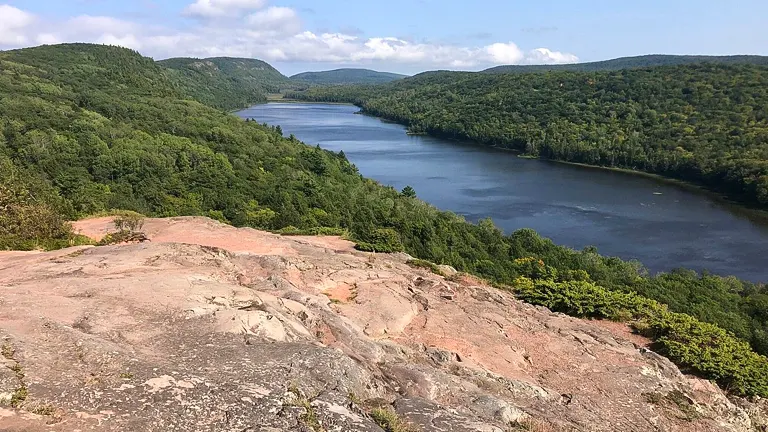
Whether you’re an avid hiker seeking challenging trails, a camper looking for a peaceful retreat under the stars, or simply a nature lover eager to witness the awe-inspiring views, the Porcupine Mountains offer an unparalleled outdoor experience. Dive into the heart of Michigan’s natural gem, where every path leads to discovery and every moment is a memory in the making.
Characterizing Features of Porcupine Mountains Wilderness State Park
- Old-Growth Forests: The Porcupine Mountains are celebrated for their extensive old-growth forests, which cover much of the park’s landscape. These ancient woodlands, comprising predominantly of hemlock, sugar maple, and yellow birch, are a rare sight in the Midwest due to extensive logging in the past centuries. These forests serve as a critical habitat for diverse species and are a significant draw for researchers and nature enthusiasts, providing a unique glimpse into the ecological past of the region.
- Lake of the Clouds: Among the park’s most photographed and beloved features is the Lake of the Clouds. Situated in a basin surrounded by the Porcupine Mountains, this stunning body of water offers panoramic views that are especially breathtaking during sunrise and sunset. The overlook accessible to visitors provides a perfect vantage point to appreciate the serene beauty of the lake against the backdrop of the densely forested mountains.
- Presque Isle River and Waterfalls: The Presque Isle River runs through the park, creating a series of spectacular waterfalls as it makes its way to Lake Superior. The river’s journey through rocky gorges and over precipices creates natural attractions such as Manabezho Falls, Manido Falls, and Nawadaha Falls. These waterfalls are easily accessible via well-maintained trails, offering visitors the chance to experience the power and beauty of nature up close.
- The Escarpment Trail: This trail offers one of the most dramatic hiking experiences in the park, following the edge of an escarpment that provides stunning views of the Lake of the Clouds on one side and vast wilderness on the other. The trail’s challenging terrain and breathtaking vistas encapsulate the rugged beauty of the Porcupine Mountains, making it a favorite among hikers seeking both adventure and natural beauty.
- Summit Peak Observation Tower: Standing as the highest point in the park, Summit Peak offers visitors a 360-degree view of the surrounding wilderness from an observation tower. The journey to the peak takes you through diverse ecosystems, and once at the top, you are rewarded with views of Lake Superior, the Apostle Islands, and on clear days, even the distant shores of Canada. This feature highlights the park’s elevation diversity and the expansive beauty of Michigan’s Upper Peninsula.
- Backcountry Camping: Offering a truly immersive wilderness experience, the park’s backcountry camping allows adventurers to spend nights under the stars surrounded by the sounds of nature. This feature attracts those looking to disconnect and find solitude in the wilderness, providing a variety of backcountry sites accessible only by foot, which ensures a peaceful and unspoiled camping experience.
History of Porcupine Mountains Wilderness State Park
The Porcupine Mountains Wilderness State Park, established in 1945, is a testament to Michigan’s commitment to preserving natural beauty and biodiversity. Its creation was a proactive measure to protect the remaining old-growth forests from logging, which had decimated vast tracts of woodland across the United States. The park’s history is a reflection of the evolving attitudes towards conservation and the increasing value placed on wilderness areas for their ecological, recreational, and aesthetic importance.
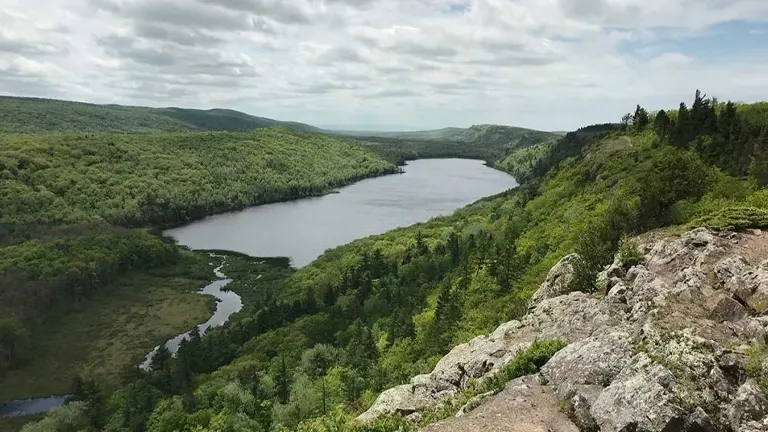
Over the years, the park has expanded from its original size to encompass over 60,000 acres, making it Michigan’s largest state park. This expansion has been crucial in further protecting the area’s diverse ecosystems, which include not only vast forests but also rivers, waterfalls, and a significant stretch of Lake Superior shoreline. The park’s management practices have evolved to emphasize not only conservation but also recreation, offering a wide range of outdoor activities while ensuring the preservation of its natural resources. Today, the Porcupine Mountains Wilderness State Park stands as a testament to successful conservation efforts, attracting visitors from around the globe who come to experience its untouched wilderness and scenic beauty.
Unique Ecosystem of Porcupine Mountains Wilderness State Park
The Porcupine Mountains Wilderness State Park is home to a unique ecosystem that stands as a remarkable example of biodiversity and natural resilience. Anchored by one of the largest stretches of old-growth forest in the Midwest, the park’s ecosystem supports a wide variety of plant and animal life. This biodiversity hotspot encompasses a range of habitats, from rugged escarpments and serene lakes to rushing rivers and waterfalls, each offering a niche for different species.
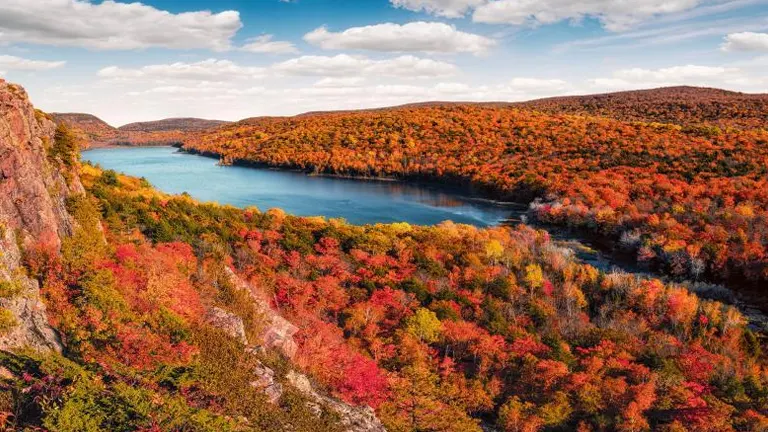
The ancient forests, dominated by hemlock, sugar maple, and yellow birch, provide not only a canopy for diverse undergrowth but also habitat for wildlife including deer, wolves, and numerous bird species. The park’s location along the south shore of Lake Superior further influences its climate and ecological diversity, creating a microcosm where temperate and boreal habitats converge. This rich mosaic of ecosystems makes the Porcupine Mountains a vital refuge for species preservation and a fascinating destination for nature enthusiasts.
Location of Porcupine Mountains Wilderness State Park

Located in the western Upper Peninsula of Michigan, Porcupine Mountains Wilderness State Park spans over 60,000 acres, making it Michigan’s largest state park. It is bordered by the vast waters of Lake Superior to the north, offering spectacular coastal views and access to pristine beaches. The park’s remote location contributes to its untouched beauty, offering visitors a true wilderness experience.
Here are some specific guides on how to reach Porcupine Mountains Wilderness State Park:
By Car:
- From the east (Marquette, MI): Take US-41 W towards Houghton, then follow M-26 W and M-38 W to M-64 W. Continue on M-64 W directly into the park.
- From the west (Duluth, MN): Take US-2 E to M-64 N in Wakefield, MI. Follow M-64 N straight to the park.
- From the south (Green Bay, WI): Follow US-141 N to US-2 W in Crystal Falls, MI. Continue on US-2 W, then turn north onto M-64 to the park.
By Plane:
- The nearest commercial airports are in Houghton, MI (Houghton County Memorial Airport) and Ironwood, MI (Gogebic-Iron County Airport). From these airports, car rental services are available to complete the journey to the park.
Public Transportation:
- Public transportation options are limited in this remote area. However, there are regional bus services that run to nearby towns such as Ironwood and Houghton. From there, you would need to arrange for a taxi service or a car rental to reach the park.
Shuttle Services:
- During peak tourist seasons, some local shuttle services offer trips to and from the park from specified pickup points. It’s best to check with local tourism offices for the most current shuttle offerings.
Driving Tips:
- Ensure your vehicle is in good condition, as services are limited within and around the park.
- During winter months, roads can be snowy and icy. Winter tires and driving experience in snow are recommended.
- Cell service can be spotty in the Upper Peninsula, so download maps or have a paper map handy.
The Importance of Conservation and Recreation in Porcupine Mountains Wilderness State Park
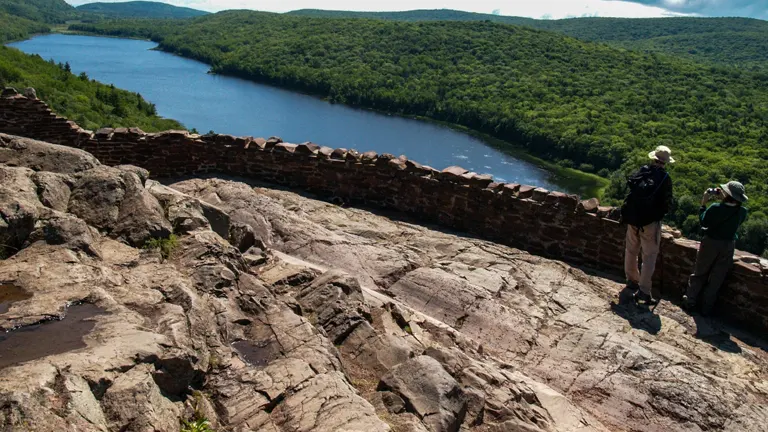
The Porcupine Mountains Wilderness State Park is a living classroom and a recreational paradise, showcasing the importance of conservation in preserving natural habitats and biodiversity. The park’s protected status safeguards its unique ecosystems, allowing researchers and nature enthusiasts alike to study and enjoy an environment largely untouched by human development. Conservation efforts ensure that the park’s majestic landscapes, from its vast forests to the rugged shoreline of Lake Superior, remain a haven for wildlife and a retreat for visitors seeking solace in nature. Meanwhile, the park’s recreational offerings, from hiking and camping to winter sports, underscore the value of preserving natural spaces not only for their ecological importance but also for their contribution to human health and happiness.
Diverse Vegetation and Plant Species in Porcupine Mountains Wilderness State Park
- Eastern Hemlock (Tsuga canadensis): The Eastern Hemlock is a key component of the park’s old-growth forests, offering dense canopy layers that provide habitat and shelter for various wildlife species. Its presence is indicative of the park’s undisturbed natural environment.
- Sugar Maple (Acer saccharum): Dominant in the park’s deciduous forests, the Sugar Maple contributes to the vibrant fall foliage that attracts numerous visitors. This species plays a crucial role in the forest ecosystem, supporting a wide range of wildlife with its seeds.
- Yellow Birch (Betula alleghaniensis): Recognizable by its shiny, yellowish bark, the Yellow Birch adds diversity to the park’s forests. It thrives in the moist, cool climate of the Porcupine Mountains, providing essential habitat and food for birds and mammals.
- Northern White Cedar (Thuja occidentalis): This evergreen species is found in the park’s wetter areas, contributing to the biodiversity of the park’s swamp and riverside habitats. Its wood is resistant to decay, making it an important material for wildlife.
- Balsam Fir (Abies balsamea): The Balsam Fir, with its distinctive conical shape and fragrant needles, is another coniferous tree that populates the park. It adds to the park’s dense forest canopy and serves as important cover for deer and moose in winter.
- Paper Birch (Betula papyrifera): Known for its white, peeling bark, the Paper Birch is an early successional species that grows quickly in areas cleared by fire or logging. It is an important source of food for moose and provides nesting sites for birds.
- Wildflowers: The park boasts a wide array of wildflowers, including the Pink Lady’s Slipper (Cypripedium acaule), Trillium, and the Michigan state flower, the Dwarf Lake Iris (Iris lacustris). These species add seasonal color and attract pollinators, contributing to the ecosystem’s health.
- Ferns and Mosses: The understory of the park’s forests is rich with various species of ferns and mosses, creating a lush, green layer that is crucial for soil health and moisture retention. Species such as the Maidenhair Fern (Adiantum pedatum) and sphagnum moss are common, enhancing the park’s understory biodiversity.
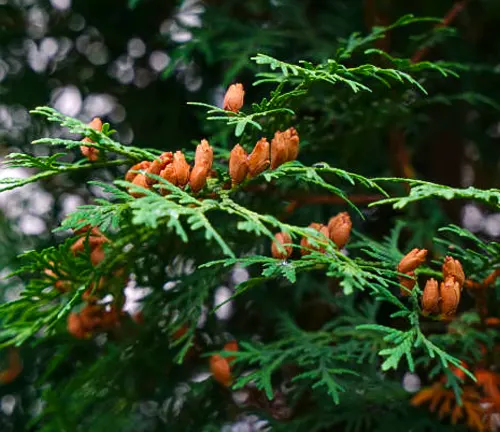
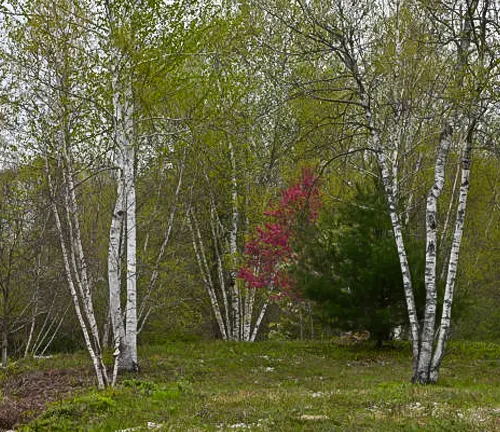
Fauna in Porcupine Mountains Wilderness State Park
- Gray Wolf (Canis lupus): The presence of the gray wolf in the park signifies a healthy, balanced ecosystem. These apex predators play a crucial role in controlling the population of deer and other prey, maintaining the natural balance within the forested landscapes of the park.
- American Black Bear (Ursus americanus): Black bears are a common sight in the Porcupine Mountains, where they roam the forests in search of berries, nuts, and other foods. Their presence is a reminder of the wilderness that the park preserves and the importance of human visitors practicing safe food storage and disposal.
- Moose (Alces alces): The majestic moose, the largest member of the deer family, can be spotted in the park’s wetlands and dense forests. These solitary animals are a draw for wildlife enthusiasts, symbolizing the wild essence of the Upper Peninsula’s natural areas.
- White-tailed Deer (Odocoileus virginianus): A common inhabitant of the park, white-tailed deer are pivotal in the ecosystem, serving as prey for wolves and bears. Their populations are carefully monitored to ensure a healthy balance with the park’s vegetation and predator species.
- Bald Eagle (Haliaeetus leucocephalus): The bald eagle, America’s national bird, thrives along the shores of Lake Superior and the park’s rivers. These majestic birds of prey are often seen soaring above the water, diving for fish, and nesting in tall trees, symbolizing the wilderness preserved in the park.
- Beaver (Castor canadensis): Beavers are ecosystem engineers, creating ponds and wetlands that provide habitat for numerous other species. Their dams and lodges can be observed along the park’s waterways, showcasing the beaver’s critical role in shaping the park’s aquatic environments.
- Porcupine (Erethizon dorsatum): This slow-moving rodent is well adapted to the forested environment of the Porcupine Mountains. Named for their quill-covered bodies, porcupines are a unique and interesting species that contributes to the biodiversity of the park.
- Songbirds and Migratory Birds: The park serves as an important habitat for a wide variety of songbirds and migratory birds, including the Common Loon (Gavia immer), Warblers, and the Pileated Woodpecker (Dryocopus pileatus). These birds fill the forests with their songs and are crucial for pollination and controlling insect populations.
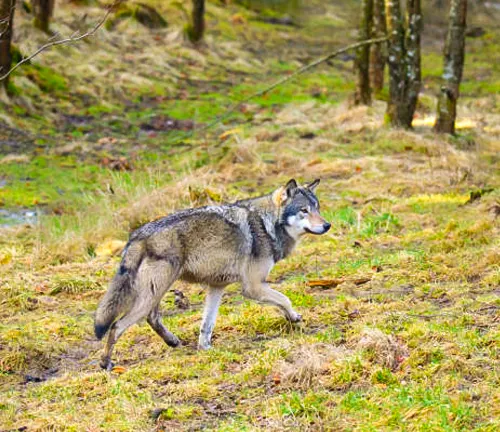

Attractions in Porcupine Mountains Wilderness State Park
Lake of the Clouds: Often considered the crown jewel of the park, Lake of the Clouds is accessible via a scenic overlook that provides visitors with stunning views of the lake nestled among the Porcupine Mountains. The overlook is a popular destination for photographers and nature lovers, especially in the fall when the surrounding forests display a vibrant array of colors.
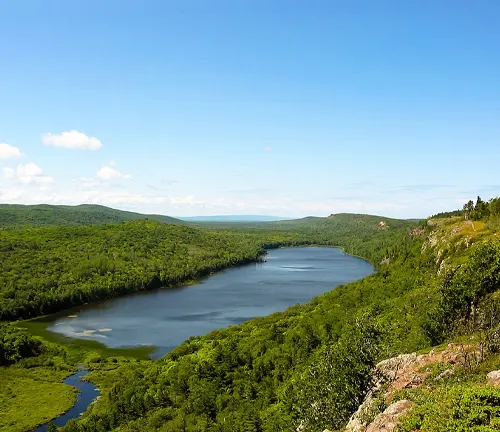
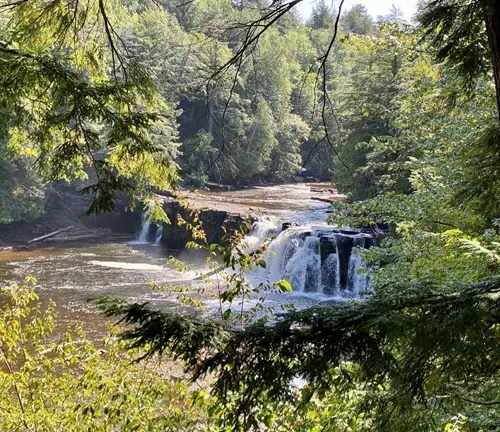
Presque Isle River and Waterfalls: The western portion of the park features the Presque Isle River, known for its series of beautiful waterfalls, including Manabezho Falls, Manido Falls, and Nawadaha Falls. A network of trails and boardwalks allows visitors to explore these natural features up close, offering an immersive experience in the park’s dynamic water landscape.
Summit Peak: As the highest point in the park, Summit Peak offers an observation tower that provides panoramic views of the surrounding wilderness, Lake Superior, and on clear days, even the distant shores of Canada. The hike to Summit Peak is rewarding, with interpretive signs along the way that educate visitors about the local flora and fauna.
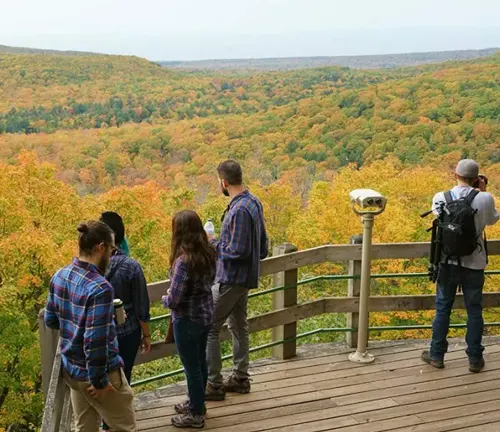
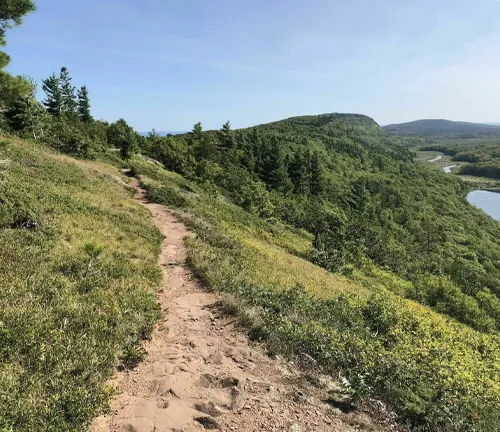
Escarpment Trail: This trail offers one of the most dramatic hiking experiences in the park, with breathtaking views of the Lake of the Clouds and the Carp River Valley. The Escarpment Trail is a favorite among hikers for its challenging terrain and the unparalleled vistas it offers, highlighting the rugged beauty of the Porcupine Mountains.
Porcupine Mountains Ski Area: During the winter months, the park transforms into a haven for winter sports enthusiasts, with the Porcupine Mountains Ski Area offering downhill skiing and snowboarding opportunities. The ski area features a variety of runs to accommodate different skill levels, along with stunning views of Lake Superior.
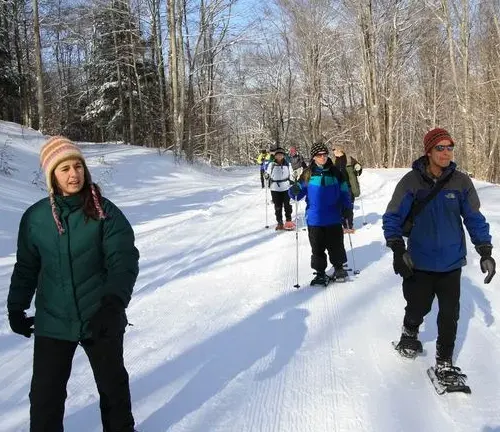
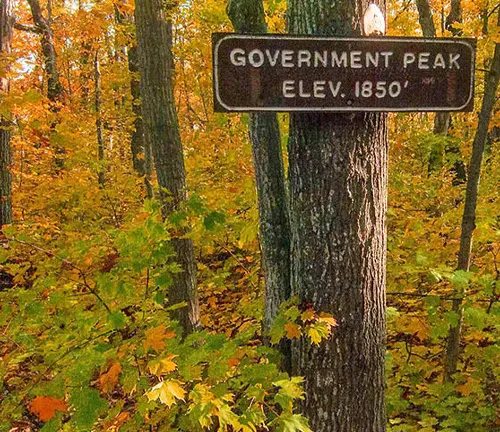
Government Peak Trail: This challenging trail takes hikers through some of the park’s most remote and pristine areas, offering an opportunity to experience the wilderness that the Porcupine Mountains are known for. The trail is ideal for those looking for a more strenuous hike away from the more frequented areas of the park.
Porcupine Mountains Wilderness Visitor Center: The visitor center serves as an excellent starting point for exploring the park, offering educational exhibits on the area’s natural history, geology, and wildlife. Staff are on hand to provide information, recommend trails, and help visitors plan their adventures in the park.

Recreational Activities in Porcupine Mountains Wilderness State Park
- Hiking: With over 90 miles of trails winding through diverse landscapes—from dense forests and rugged escarpments to serene lakes and rivers—hiking is a premier activity in the park. Trails range from short, easy walks to challenging multi-day hikes, catering to all skill levels. The Escarpment Trail and the trail to Summit Peak are particularly popular for their breathtaking views.
- Backcountry Camping: For those looking to fully immerse themselves in the wilderness, backcountry camping offers a chance to spend nights under the stars in some of the park’s most secluded spots. This activity requires preparation and respect for nature, ensuring minimal impact on the pristine environment.
- Fishing: The park’s numerous rivers, streams, and lakes are ideal for fishing, offering opportunities to catch trout, salmon, and other freshwater species. Lake Superior’s shoreline and the Presque Isle River are favorite spots for anglers. Remember to check local regulations and obtain the necessary fishing license.
- Wildlife Viewing: The park’s rich biodiversity makes it a fantastic place for wildlife viewing. From spotting moose and deer in the forests to observing bald eagles and other birds of prey, visitors can enjoy the thrill of seeing these animals in their natural habitat.
- Photography: With its stunning landscapes, diverse wildlife, and seasonal beauty, the park is a photographer’s paradise. Whether capturing the vibrant fall colors, the serene beauty of Lake of the Clouds, or the frozen splendor of the waterfalls in winter, photographers of all levels will find endless inspiration.
- Winter Sports: Winter transforms the park into a snowy wonderland, offering activities such as cross-country skiing, snowshoeing, and downhill skiing at the Porcupine Mountains Ski Area. The park’s snow-covered landscapes open up new ways to explore and enjoy its natural beauty.
- Water Activities: Kayaking and canoeing on the park’s rivers and Lake Superior provide a unique perspective of the wilderness and its shoreline. The Presque Isle River, with its calmer waters, is particularly suited for paddling, offering a peaceful way to explore the park’s aquatic environments.
- Nature Programs: The park offers a range of interpretive programs and guided tours during the summer months, providing insights into its natural and cultural history. These programs are a great way to learn more about the park’s ecosystem, wildlife, and conservation efforts.
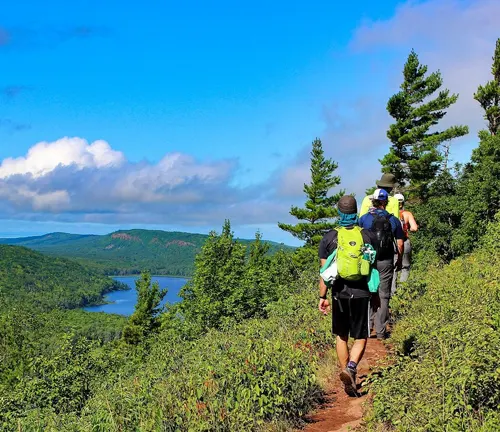

Different Facilities and Amenities in Porcupine Mountains Wilderness State Park
- Visitor Center: The Porcupine Mountains Wilderness State Park Visitor Center is a hub of information for guests, providing maps, brochures, and exhibits on the park’s geography, wildlife, and history. Staffed by knowledgeable rangers, the visitor center is an essential first stop for planning your visit, offering insights into current conditions, trail recommendations, and safety tips.
- Campgrounds: The park features a variety of camping options, from developed campgrounds with modern facilities such as showers and electric hook-ups to rustic campsites for a more traditional camping experience. The Union Bay Campground and the Presque Isle Campground cater to those looking for convenience and comfort, while backcountry sites appeal to those seeking solitude and a wilderness experience.
- Trails: Over 90 miles of trails crisscross the park, ranging from easy walks to challenging hikes through diverse terrains. Well-maintained and marked, these trails offer access to the park’s natural attractions, including old-growth forests, waterfalls, and panoramic overlooks. Trail maps are available at the visitor center, ensuring hikers can plan their journey according to their abilities and interests.
- Observation Towers: The Summit Peak Observation Tower is a notable facility, offering panoramic views of the park and beyond. This tower allows visitors to appreciate the vastness of the wilderness and the beauty of Lake Superior from a unique vantage point. It’s an ideal spot for photography, bird watching, and simply enjoying the breathtaking landscape.
- Picnic Areas: Scattered throughout the park, picnic areas provide a perfect spot for families and groups to enjoy a meal amidst nature. These areas are equipped with tables and, in some cases, grills, making them a convenient option for a lunch break during your explorations.
- Boat Launches: For those interested in fishing or exploring the park’s waterways, boat launches are available at select locations, including Lake Superior and the interior lakes. These facilities cater to kayakers, canoeists, and small motorboats, allowing for easy access to the park’s aquatic environments.
- Ski Area: In the winter, the Porcupine Mountains Ski Area becomes a focal point for winter sports enthusiasts. Offering downhill skiing and snowboarding with a variety of runs for different skill levels, the ski area is equipped with a lodge, rental facilities, and ski lifts, making it a premier destination for winter recreation.
- Restrooms and Showers: For visitor convenience, the park provides restrooms and shower facilities at various locations, including campgrounds and near major trailheads. These amenities enhance the comfort of your visit, whether you’re spending a day hiking or camping overnight.
Tips and Advice for Visiting Porcupine Mountains Wilderness State Park
- Plan Ahead: Before visiting, check the park’s website or contact the visitor center for the latest information on trail conditions, weather forecasts, and any alerts or closures. Planning ahead ensures you’re prepared for the current conditions and can make the most of your visit.
- Respect Wildlife: The park is home to a diverse range of wildlife, including bears, moose, and wolves. Keep a safe distance from animals, never feed wildlife, and store your food properly to avoid attracting animals to your campsite. Respecting wildlife helps protect both you and the animals.
- Leave No Trace: Practice Leave No Trace principles to minimize your impact on the environment. Pack out all trash, stay on marked trails to avoid damaging vegetation, and camp only in designated areas. Preserving the park’s natural beauty is a responsibility shared by all visitors.
- Be Prepared for the Weather: Weather in the Upper Peninsula can be unpredictable, with sudden changes that could affect your plans. Dress in layers, bring waterproof gear, and always have a plan for shelter in case of unexpected weather conditions.
- Wear Appropriate Footwear: The park’s trails range from easy walks to rugged backcountry hikes. Wear sturdy, comfortable hiking boots or shoes with good grip to navigate the varied terrain safely and comfortably.
- Bring Navigation Aids: While the park’s trails are generally well-marked, bringing a map, compass, or GPS device is essential, especially if you plan to explore the backcountry. Cell service can be unreliable in remote areas, so don’t rely solely on your phone for navigation.
- Stay Hydrated and Pack Snacks: Carry enough water for your hike, as well as a way to purify water from natural sources if you’re on longer trails. Bring high-energy snacks or a packed lunch to maintain your energy levels throughout the day.
- Inform Someone of Your Plans: Especially if you’re heading into less traveled parts of the park or backcountry camping, let someone know your itinerary and expected return time. This precaution is vital for your safety in case of an emergency.
- Check for Ticks: The park, like many natural areas, is home to ticks that can carry diseases. After hiking, check yourself, your children, and pets for ticks to prevent tick-borne illnesses.
- Be Bear Aware: Store food and scented items securely, using bear-proof containers or storage facilities where available. Knowing how to properly store food and manage waste is crucial for preventing bear encounters.
Recommendation
For anyone seeking an adventure into the heart of nature’s untouched beauty, the Porcupine Mountains Wilderness State Park is an essential destination. Its combination of natural diversity, conservation efforts, and recreational opportunities makes it a unique treasure within Michigan’s landscape.
Conclusion
In summary, Porcupine Mountains Wilderness State Park is a jewel of the Midwest, offering unparalleled access to pristine natural landscapes and outdoor adventure. Its mix of ancient forests, majestic waterfalls, and panoramic views provides a perfect backdrop for anyone seeking to connect with nature. Whether you’re an avid hiker, a casual explorer, or simply in search of peace and tranquility, the Porcupine Mountains deliver an unforgettable experience, underscoring the importance of preserving such precious wilderness areas for future generations.
FAQs
- What is the best time of year to visit the Porcupine Mountains?
The park is beautiful and accessible year-round, but the best time to visit depends on your interests. Summer offers warm weather for hiking and camping, while fall brings stunning foliage. Winter is ideal for snow sports like skiing and snowshoeing. Spring can be muddy but also offers waterfalls at their peak flow. - Do I need a permit for backcountry camping?
Yes, a permit is required for backcountry camping in the Porcupine Mountains Wilderness State Park. Permits can be obtained at the park visitor center or at specific trailheads. It’s recommended to check the latest requirements and fees on the park’s official website before your visit. - Are pets allowed in the park?
Pets are allowed in most outdoor areas of the park, provided they are kept on a leash no longer than 6 feet at all times. However, pets are not permitted on certain trails or in specific areas to protect wildlife habitats and ensure the safety of all park visitors. - Is there cell phone service in the park?
Cell phone coverage is limited and can be unreliable within the park, especially in remote or low-lying areas. It’s wise to prepare for limited service by downloading maps and information ahead of time and letting someone know your itinerary. - Can I rent equipment at the park, such as kayaks or skis?
The park itself does not offer equipment rentals, but there are local businesses in nearby communities that provide rentals for kayaks, canoes, skis, and snowshoes. It’s a good idea to arrange your rentals in advance, especially during peak seasons. - Are there any guided tours available?
The park offers a variety of ranger-led programs and guided tours during the summer months, which can include hikes, educational talks, and night sky viewing events. Availability and schedules vary by season, so check the park’s events calendar or contact the visitor center for the latest information. - What should I do if I encounter wildlife, such as a bear or a moose?
If you encounter wildlife, keep a safe distance, do not attempt to feed or approach them, and observe quietly. If faced with a bear, do not run; instead, speak calmly and back away slowly. For moose, give them plenty of space and avoid coming between a mother and her calf. - What are the must-see attractions within the park?
Key attractions include the Lake of the Clouds overlook for its stunning views, the Presque Isle River area for waterfalls and rapids, Summit Peak for panoramic vistas, and the Escarpment Trail for a scenic hike. Each offers a unique perspective on the park’s natural beauty.
The Porcupine Mountains Wilderness State Park encapsulates the essence of wild beauty and adventure. A haven for nature lovers and outdoor enthusiasts alike, it beckons with its majestic landscapes and serene wilderness. Let the memory of its vast, untouched beauty inspire you until your next visit, reminding us all of the preciousness of the natural world.

Benjamin Brooks
Forestry AuthorGreetings! I'm Benjamin Brooks, and my journey over the past 15 years has revolved around the fascinating realms of content creation, expertise in snow clearing, and the intricate world of lumberjacking and landscaping. What began as a simple curiosity about the natural world and heavy machinery has evolved into a passionate profession where my love for crafting words intertwines seamlessly with my lumberjacking and garden skills.


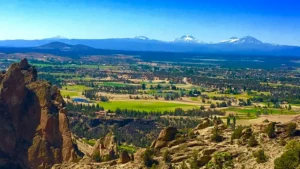
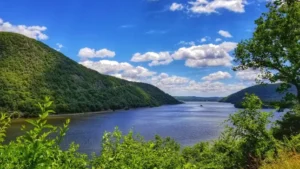
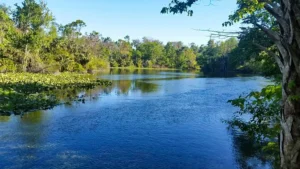
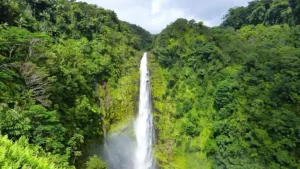
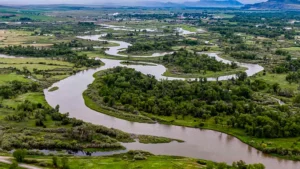
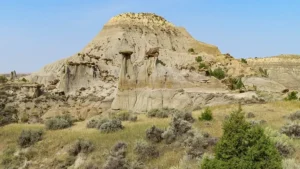




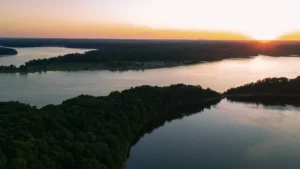
Leave your comment